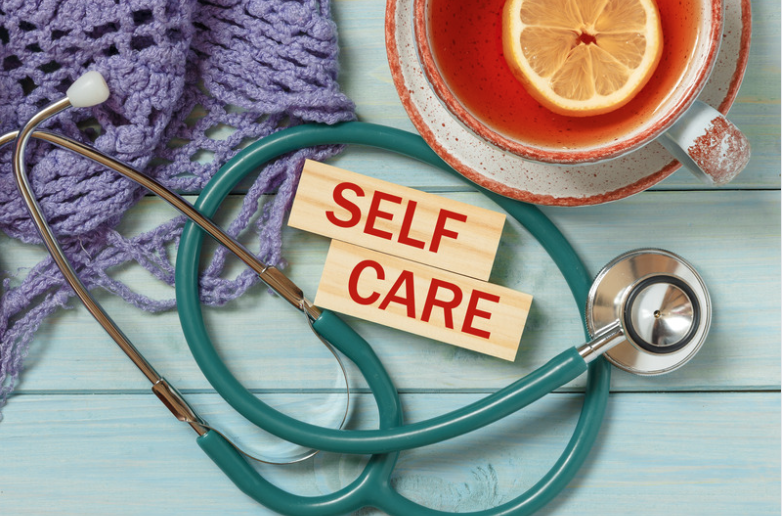 Taking care of ourselves helps us develop coping skills and build our resilience. This is critical to both our own well-being and to the well-being of the children in our lives, which is strongly linked to the mental well-being of the important adults[1] around them.
Taking care of ourselves helps us develop coping skills and build our resilience. This is critical to both our own well-being and to the well-being of the children in our lives, which is strongly linked to the mental well-being of the important adults[1] around them.
Adults often act as emotional “coaches”, providing support and guidance in stressful situations. When adults are available, sensitive and responsive to children’s inner worlds, they can help children manage negative thoughts and emotions, and be kind to themselves and others. Research shows that in order to be a positive force in a child’s development, adults need to stay within their “Window of Tolerance[2]”, remaining Secure and Calm and Alert and Engaged at the same time.
Children depend on adults to be pillars of support, guidance and love that hold them up in their everyday life. However, current global issues have created a culture of uncertainty and mass anxiety where many people are on high alert and unable to maintain emotional balance.
Our brains are wired to detect and process threats before everything else. In times of crisis, when our children are particularly dependent on us to feel secure and calm, it becomes especially important to take a moment to take care of ourselves, build up inner resources, and recharge.
What can you do throughout the day/week that will foster a sense of security and calmness and help you to stay within your window of tolerance?
Creating positive change can be difficult. According to Dr. BJ Fogg, a Behavioural Psychologist at Stanford University, we often feel there is not enough time in the day, leading to a “scarcity mindset” where we say NO to positive changes because we think we simply don’t have time to introduce new, healthy practices. This mindset can impede our self care attempts.
Dr. Fogg’s research shows that “tiny is mighty” and that by focusing on small actions, it’s easier to wire in new, small habits by stacking a new behaviour on top of a habit we already engage in. For example, if you boil a kettle of water each morning to make a cup of tea, you can do 5 body stretches while you wait for it to boil, or, while brushing your teeth, you could close your eyes and mindfully brush each tooth while focusing on your breath.
Here are 4 simple, quick and stackable self care practices to build up inner resources and recharge:
 1. Ground: Through Your Feet
1. Ground: Through Your Feet
While sitting on a chair, put your feet flat on the floor with your legs uncrossed so your feet are in full contact with the earth. While remaining curious about your feet, press down through the heel and then through the balls of your feet, noticing any sensation coming up through your legs. Notice where your body touches the chair and what that feels like.
This behaviour could be stacked on top of any activity you do while sitting down. For example, each morning when you get out of bed, first sit on the side of the bed and ground your feet, or if you work at a desk, you could do this when you first arrive at your desk each day.

2. Breathe: The Long Exhale
Long exhales soothe your nervous system and calm the body. Simply breathe out for longer than you breathe in. For example, breathe in and count for 4 seconds, then as you exhale breathe out and count for 6 seconds. Do this three times in a row.
This breathing technique could be done when you take a bathroom break, while you make your bed, or while driving.

3. Smell the Roses
Find a fragrance, perhaps a candle or essential oil, that you associate with joy, love, calm, or a positive memory, and take in the fragrance, slowly and carefully. Research shows that the scent of a familiar and pleasant odour can deactivate the nervous system and promote a sense of security and ease.
This is a simple sensory (olfactory) activity that can help activate a sense of safety and pleasantness by bypassing the thinking brain and going straight to the regions of our brain responsible for memory and emotions.
Light a candle while you watch TV or read a book, or put a drop of lavender oil on your pillow each night before you go to sleep.
 4. Laugh
4. Laugh
Make sure to laugh during the day! Laughter is a fun, stress-buffering activity that releases feel-good chemicals such as dopamine and serotonin, while simultaneously inhibiting stress-related chemicals, such as cortisol and adrenaline.
Watch a funny video on your lunch break, read the funnies and laugh out loud on Sunday morning at breakfast, or share jokes with your kids on your walk to school. There are so many ways to add laughter in our daily routines.
For more practices to improve your well-being visit our Heart-Mind Resource 12 Practices for Connecting to Self and Others in Time of Stress.
According to Bowlby's attachment theory, adults play an important role in children's maturation. They help to foster child’s emotional adjustment, well-being, and social skills.
The term "Window of Tolerance", which was proposed by Clinical Professor of Psychiatry Dan Siegel, describes the state of brain activity in which a person is able to function most effectively, otherwise known as their “Optimal Zone of Arousal”. When people are within this zone, they are typically able to easily navigate daily stressors, and to remain compassionate and kind toward themselves and others.